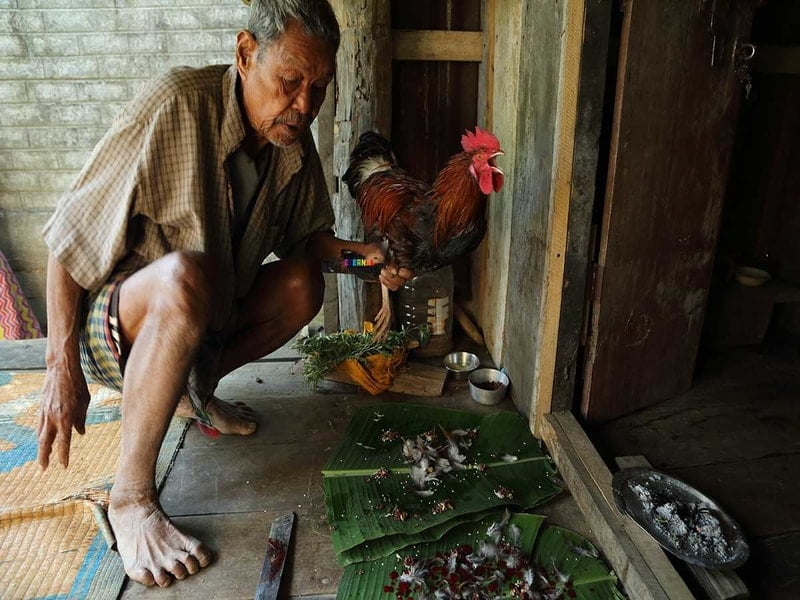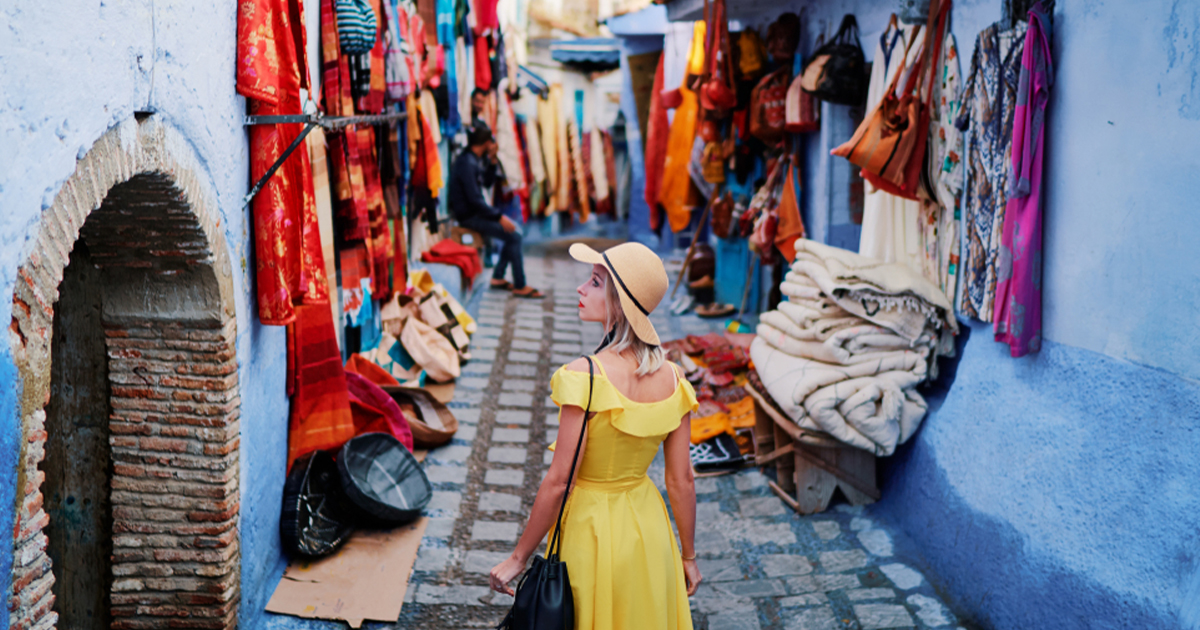A Tribe On The Verge Of Extinction
The Toto people are a small, isolated tribe of the sub-Himalayas that live a primitive, simple life with only the use of locally available resources. They live in a small village with absolutely no utilities and no road access.
The Toto are known as one of the smallest primitive tribes left in the world, and are currently considered endangered. In 1982, an outsider encroached on the Toto's land—and the consequences were unbelievably devastating.
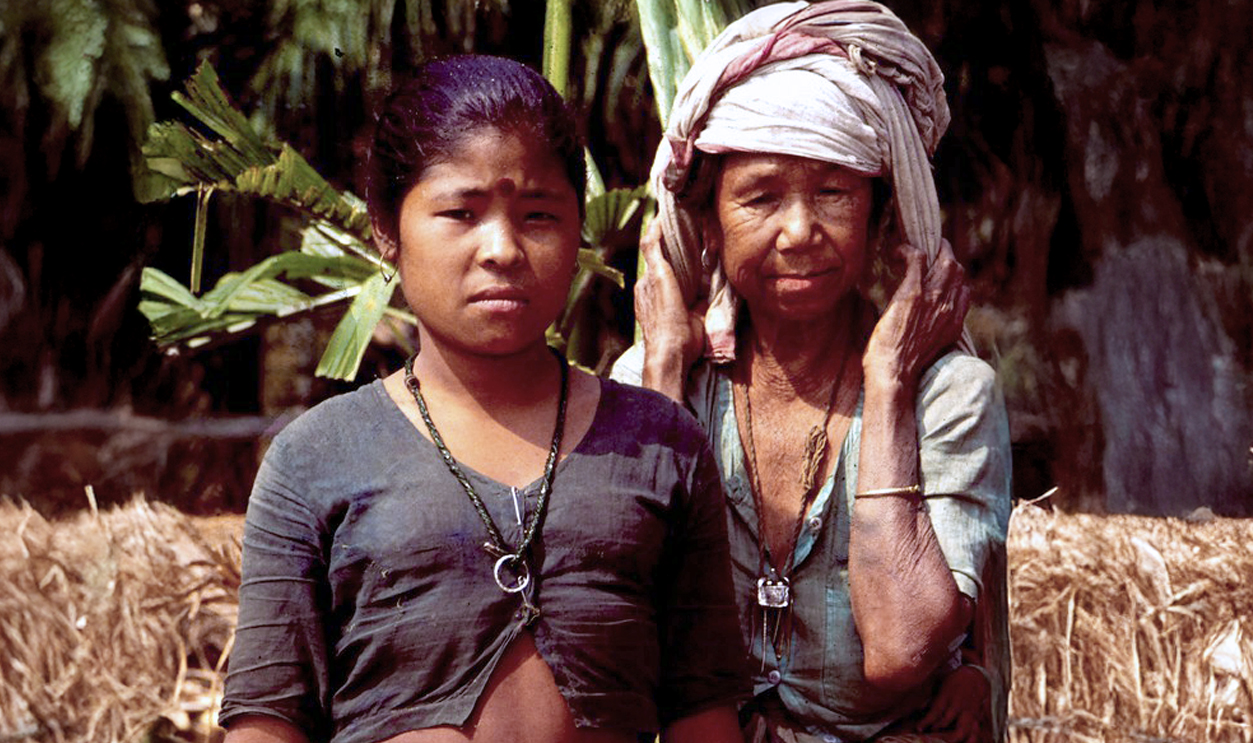
Who are they?
The Toto people are one of the world's smallest indigenous ethnic groups, living in the village of Totopara on India's border with Bhutan, in West Bengal (India).
How big is their tribe?
Totos were nearly becoming extinct in the 1950s, with only 321 tribe members left. However, recent aid to safeguard their homelands have helped the population grow.
By 2001, their population had grown to 1,184—all living in Totopara.
 Films Division, Government of India, The Wind in the Maruwa Field (2016)
Films Division, Government of India, The Wind in the Maruwa Field (2016)
What do they look like?
Toto people are traditionally described as Mongoloid—a term used for some indigenous peoples characterized by reddish skin tones, fairly thick lips, wider nose and straight hair.
What language do they speak?
The Toto language is also endangered, as it has been lost along the years. Their native language is unique to their tribe, and referred to as the Toto language.
What is their naming tradition?
Toto people are divided into 26 different clans in total, but each of them has the surname of Toto.
 Films Division, Government of India, The Wind in the Maruwa Field (2016)
Films Division, Government of India, The Wind in the Maruwa Field (2016)
What do they live in?
A traditional Toto hut is elevated above the ground, and built with bamboo, straw and clay. The walls are made of bamboo, the roof is woven together using straw, and the clay is used to hold everything together.
 Rajibnandi, CC BY-SA 3.0, Wikimedia Commons
Rajibnandi, CC BY-SA 3.0, Wikimedia Commons
How many huts do they have?
They typically have a sleeping hut—which is their main living house, and a kitchen hut and a cattle-and-poultry hut that is separate from the main living house.
 Films Division, Government of India, The Wind in the Maruwa Field (2016)
Films Division, Government of India, The Wind in the Maruwa Field (2016)
What else does their home have?
Each family home has a garden, protected by bamboo fences, where they grow potatoes, bananas, and various other vegetables for their personal supply.
What else do they eat?
In additional to cultivating fruits and vegetables, Toto people eat pork, venison, poultry and fish.
 Films Division, Government of India, The Wind in the Maruwa Field (2016)
Films Division, Government of India, The Wind in the Maruwa Field (2016)
Do they drink?
The indigenous communities in the area do not drink western beverages, such as liquor. They make their own version of it called Eu—which is made from millet, fermented rice, marua, malt and powder. It has a medicinal value as well.
 Films Division, Government of India, The Wind in the Maruwa Field (2016)
Films Division, Government of India, The Wind in the Maruwa Field (2016)
How do they hunt?
Today, most of their animals for meat consumption are raised for that purpose, which takes away traditional hunting methods.
 Films Division, Government of India, The Wind in the Maruwa Field (2016)
Films Division, Government of India, The Wind in the Maruwa Field (2016)
How do they raise their animals?
The Totos homes are built on elevated stilts. The ground level is where they keep their pigs, and sometimes smaller cattle—this is because it is easier to monitor their safety.
 Films Division, Government of India, The Wind in the Maruwa Field (2016)
Films Division, Government of India, The Wind in the Maruwa Field (2016)
What are the pigs used for?
Pigs are fed a high-quality diet, and after 2-3 years they are slaughtered and the meat is sold in the market. The pig fat is melted down and used in food preparation and also to make pain relief oils.
 Films Division, Government of India, The Wind in the Maruwa Field (2016)
Films Division, Government of India, The Wind in the Maruwa Field (2016)
Are they a nomadic tribe?
No. The Toto people live in a permanent village called Totopara, consisting of about 200 houses belonging to the Toto tribe. There are small sections of other tribes as well, but very few.
 Simchinrai, CC BY-SA 4.0, Wikimedia Commons
Simchinrai, CC BY-SA 4.0, Wikimedia Commons
What does their village have?
In recent years, modernization has made its way into their village. The community now has a primary school, a high school, and a primary health center—though many of the older generations hang tight to their primitive traditional lifestyle.
What are the schools like?
Traditionally, children were schooled at home by their parents with very little educational resources. Today, the village school is formed by local Totos who have any type of knowledge to offer. Funding comes from donations and crowdfunding.
 Films Division, Government of India, The Wind in the Maruwa Field (2016)
Films Division, Government of India, The Wind in the Maruwa Field (2016)
What is their family structure like?
Traditionally, a Toto family is patrilocal in nature—meaning they reside with or near the husband’s family. A typical Toto family is nuclear, consisting of parents and their children.
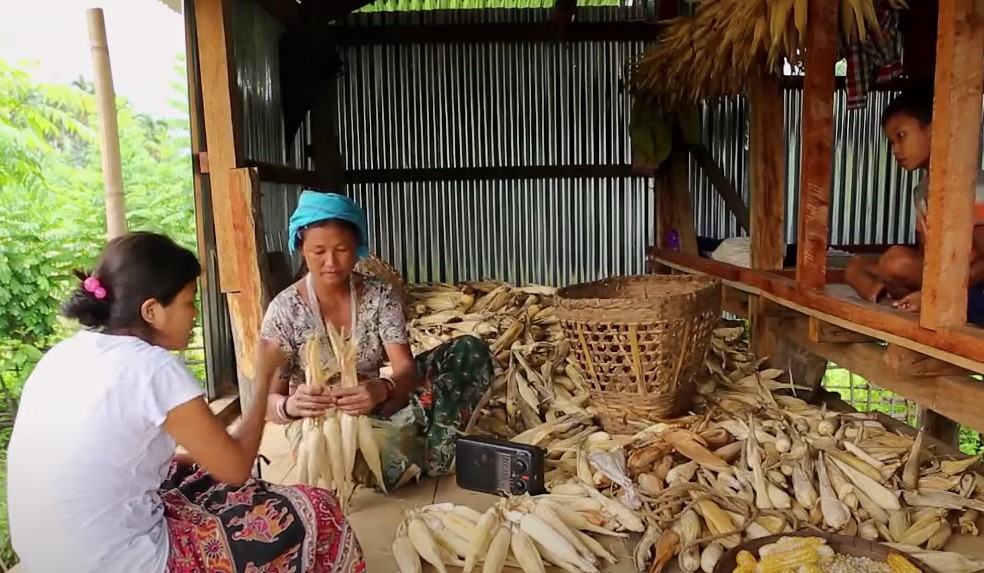 Films Division, Government of India, The Wind in the Maruwa Field (2016)
Films Division, Government of India, The Wind in the Maruwa Field (2016)
What is marriage like?
Unlike other similar tribes, the Toto people are typically monogamous—the men only have one wife, and do not partake in a dowry system.
 Films Division, Government of India, The Wind in the Maruwa Field (2016)
Films Division, Government of India, The Wind in the Maruwa Field (2016)
How are spouses chosen?
There are various ways of acquiring a partner: (1) marriage by negotiation (Thulbehoea), (2) marriage by escape (Chor-behoea), (3) marriage by capture (Sambehoea) and (4) love marriage (Lamalami).
 Films Division, Government of India, The Wind in the Maruwa Field (2016)
Films Division, Government of India, The Wind in the Maruwa Field (2016)
Can they marry outside of their community?
Totos are very much conscious and conservative about their tribal identity, and marriage with other community people is not acceptable.
 Films Division, Government of India, The Wind in the Maruwa Field (2016)
Films Division, Government of India, The Wind in the Maruwa Field (2016)
Does marrying within their tribe only cause any problems?
Because they will only marry within their community, it is common for cousins to marry. However, this causes a concern in regards to procreation, as interfamily relations have led to children born with Thalassemia disease—an inherited blood disorder—which cannot be treated without blood transfusions.
Do they believe in divorce?
No. The Toto people do not practice divorce. The only way out of a marriage is through death.
 Films Division, Government of India, The Wind in the Maruwa Field (2016)
Films Division, Government of India, The Wind in the Maruwa Field (2016)
Can a man have more than one wife?
Although most Toto men prefer monogamy, polygamy is not prohibited. If a man’s wife passes, he may marry the wife’s younger sister—but a woman cannot marry her late husband’s brother.
 Films Division, Government of India, The Wind in the Maruwa Field (2016)
Films Division, Government of India, The Wind in the Maruwa Field (2016)
What happens when a spouse passes?
On the passing of a spouse, the husband or wife must remain single for twelve months before he or she is free to remarry.
The Toto people bury their fallen members, as they do not believe in cremation.
What is the average life expectancy of the Toto people?
Recently, the Anthropological Survey of India observed that an average Toto person only lives to be about 35 years old—unless struck with disease earlier—which is a great cause of concern for their existence.
Though some of the older generations seem to be living longer as they still practice a more traditional way of life.
What are their beliefs?
Toto people consider themselves Hindus who also worship nature. They worship and fear many gods—to whom they offer sacrifices to keep peace and order.
 Films Division, Government of India, The Wind in the Maruwa Field (2016)
Films Division, Government of India, The Wind in the Maruwa Field (2016)
Who is Ishpa?
Ishpa is a god that lives in the Bhutan Hills and causes illness when displeased. They offer animal sacrifices and a fermented drink called Eu, to restore balance with Ishpa when needed.
Ishpa is worshipped outside of their homes.
 Films Division, Government of India, The Wind in the Maruwa Field (2016)
Films Division, Government of India, The Wind in the Maruwa Field (2016)
Who is Cheima?
Chiema is a god that keeps the village and its people safe. They offer Cheima rice, poultry and their fermented drink.
Cheima is worshipped inside of their homes.
 Films Division, Government of India, The Wind in the Maruwa Field (2016)
Films Division, Government of India, The Wind in the Maruwa Field (2016)
Do they have religious tribe members?
The Toto people have priests, who also offer worship and sacrifices on their own to the gods on a regular basis.
 Films Division, Government of India, The Wind in the Maruwa Field (2016)
Films Division, Government of India, The Wind in the Maruwa Field (2016)
What is their biggest religious festival?
The biggest festival celebrated by Totos is called Angchu Puja–which lasts between August and October 18. They give hens and pigeons as gifts to gods and goddesses during this time.
How do they perform sacrifices?
Their traditional tool used for sacrificing animals (typically a rooster) is called a Goshu—which is a three-foot-long piece of iron used to end the life of the animal sacrifice.
What is Bhado month?
Bhado month is September, when they celebrate Pongchu, a festival in which they worship monsoon and khula nala—which is monsoon season. During this time, they express gratitude for the rainy season.
 Films Division, Government of India, The Wind in the Maruwa Field (2016)
Films Division, Government of India, The Wind in the Maruwa Field (2016)
What other religions do they practice?
In recent years, Christian missionary works have made their way into the village and a small portion of the Toto population have converted to Christianity.
 Films Division, Government of India, The Wind in the Maruwa Field (2016)
Films Division, Government of India, The Wind in the Maruwa Field (2016)
How do they make money?
Toto people earn money through trade—usually their personal crops as they are not active farmers and only cultivate for personal use. They also sell betel nuts.
Some Totos raise cows and pigs as an occupation.
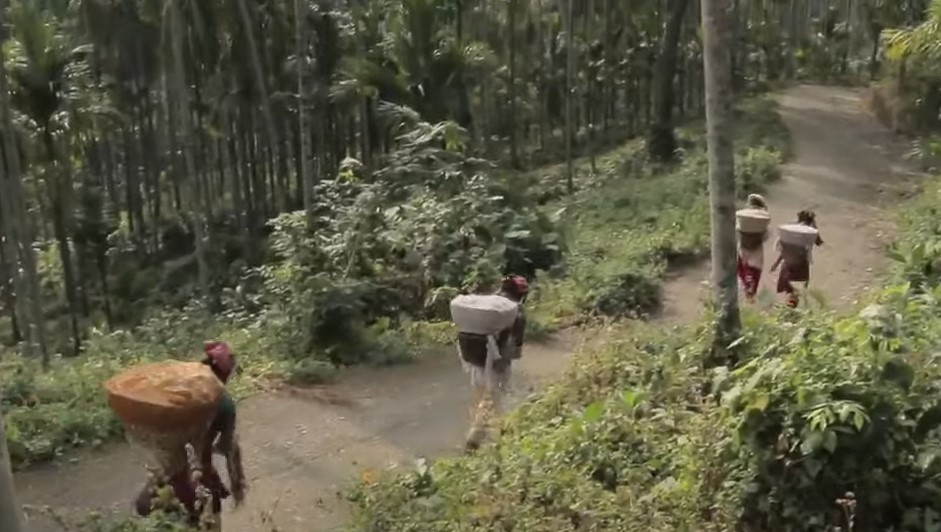 Films Division, Government of India, The Wind in the Maruwa Field (2016)
Films Division, Government of India, The Wind in the Maruwa Field (2016)
Do they practice medicine?
Traditionally, the Toto people used plants found in nature as medicine for illnesses such as diarrhea, diabetes, dengue, etc. and practiced the Ayurvedic method—which uses treatments like yoga, massage, acupuncture and herbal medicine.
 Films Division, Government of India, The Wind in the Maruwa Field (2016)
Films Division, Government of India, The Wind in the Maruwa Field (2016)
Are they friendly with other tribes?
Totopara—where the Toto tribe lives—is located around the corner from the Bhutan border, which has cultural differences with the Bhutanese people.
These differences are a major reason for constant clashes between both communities.
Pictured here is Bhutan.
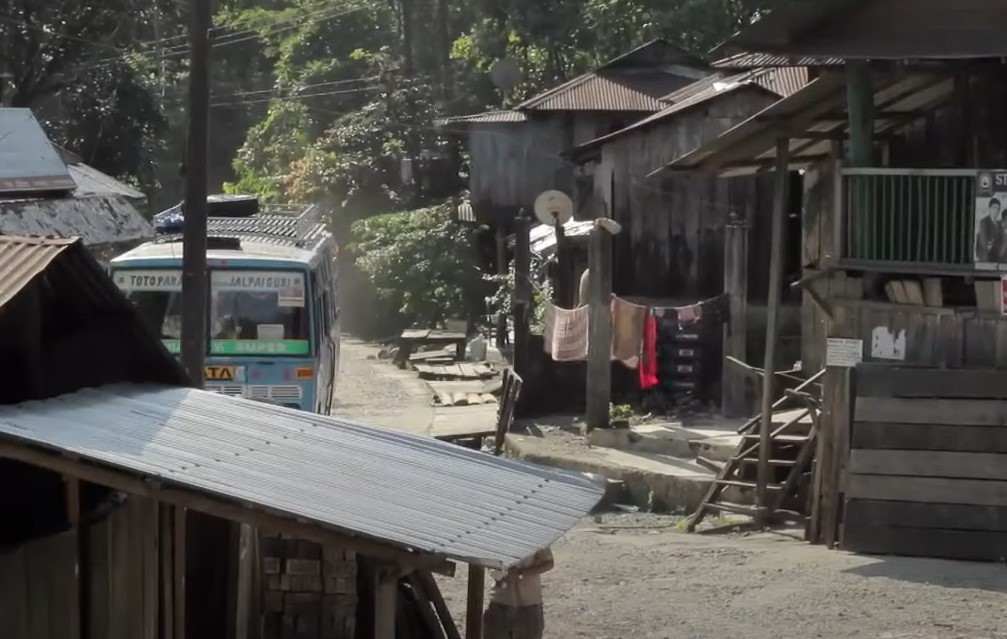 Films Division, Government of India, The Wind in the Maruwa Field (2016)
Films Division, Government of India, The Wind in the Maruwa Field (2016)
What happens between the Totos and Bhutanese?
The clash between the tribes has resulted in many losses of life, particularly with the older males. This is what caused the specific decline in population in the 1950s as Toto families were not repopulating the tribe.
 Films Division, Government of India, The Wind in the Maruwa Field (2016)
Films Division, Government of India, The Wind in the Maruwa Field (2016)
What else affected the declining population?
Between 1982-1985 a deadly epidemic occurred, which wiped out half of the Totos population. The tribe was infected by several diseases, such as: tuberculosis, diabetes, thalassemia, pneumonia, measles, rubella and hepatitis.
How were the diseases introduced?
It only took one sick outsider to get too close to introduce disease. Once one person is infected, the disease can quickly spread, and due to a lack of modern medicine, most tribal members passed within a week of becoming ill, including many children.
How do people get to the village?
The entire Totopara-Ballaguri area doesn’t have any kind of road connectivity. In order to reach the area, you have to cross several rivers that are typically dried up—except for during monsoon season when the pathways become inundated with water.
 Films Division, Government of India, The Wind in the Maruwa Field (2016)
Films Division, Government of India, The Wind in the Maruwa Field (2016)
Does the village have electricity?
There is no supply of electricity to the area. All important activities has to be done during the daylight hours. This includes inside the schools and medical facility.
What is their infrastructure like?
Aside from the few buildings mentioned before, like schools and the medical facility, there is no infrastructure in Totopara. Given that there are no roads, there is also limited transportation—however there is also no need for it.
What is the future like for the Toto People?
In recent years, modernization has creeped its way into the Toto community. As more and more villagers have become educated, they have started traveling for migrant work, making money and bringing home modernized materials, such as clothing, tools, and even some technology.
 Films Division, Government of India, The Wind in the Maruwa Field (2016)
Films Division, Government of India, The Wind in the Maruwa Field (2016)
Are they protected?
Yes, the Toto people are considered on the verge of extinction, with a dwindling population even today. They are currently covered under Scheduled Tribes and given legal protection under the Indian Constitution—though this does not help avoid globalization.
 Films Division, Government of India, The Wind in the Maruwa Field (2016)
Films Division, Government of India, The Wind in the Maruwa Field (2016)
Final Thoughts
While the Toto people are slowly transitioning into mainstream living, their village remains isolated and remote, allowing for their traditional lifestyle to continue.
Sadly, with the introduction of disease, a clash with other communities, and a hereditary blood disorder, the population of the Toto people is quickly declining and may cease to exist in the future.
 Rajibnandi, CC BY-SA 3.0, Wikimedia Commons
Rajibnandi, CC BY-SA 3.0, Wikimedia Commons











